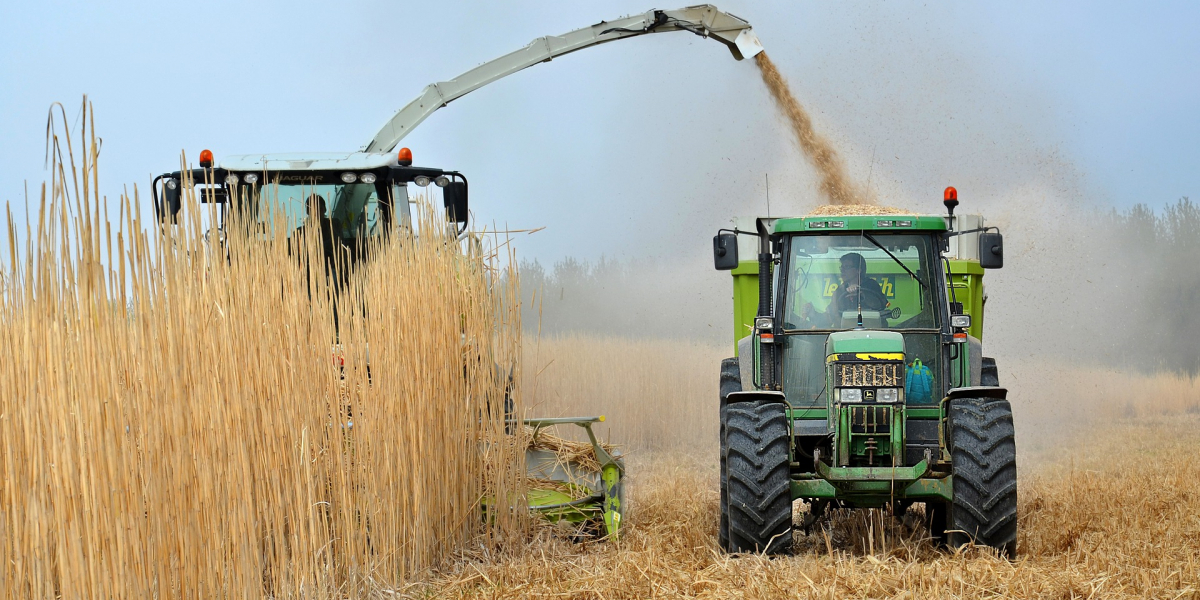
July 19, 2020
By: Anna Jessop and Sonia Cyrus Patel
Smart Prosperity Institute, in collaboration with l’Institut EDDEC, has catalogued real-world strategies and practices supporting the transition to a circular economy for seven key sectors in the Canadian economy. This research, which is being released one sector at a time in a series entitled Circular Economy Global Sector Best Practices, aims to provide a starting point in the journey towards building Canadian sector roadmaps to a circular economy.
The bioeconomy accounts for 17% of global GDP annually, a value of about C$16.7 trillion! [1] It encompasses all industries that deal with biological materials at different stages of the value chain: for example, agriculture, forestry, and fishing at the primary stage; food processing, textile manufacturing, and biotechnology in the processing stage; and retail and resource management in the consumption stage.[2] It focuses on supporting the economy with more renewable biological resources by integrating them in processes and products that have customarily used non-renewable resources.[3] Recently, the bioeconomy has developed significant momentum, with more than 50 countries having bioeconomy strategies or policies as of 2018.[4]
Within many of these national bioeconomy strategies, governments have acknowledged the important role of circularity in a sustainable bioeconomy and the term circular bioeconomy has increasingly appeared in publications.[5] Bioeconomy practices that can contribute to the development of a circular economy include the creation of biofuels, bioenergy, and innovative bio-based products such as textiles, composites, pharmaceuticals, and chemicals. A circular bioeconomy offers greater value and resource efficiency than the application of the bioeconomy alone, through the cascading use of biomass to prevent, recover, or repurpose valuable biological resources.
One of the most successful bioeconomy practices in today's market is the generation of bioenergy. Globally, bioenergy is the second largest use for biomass at 11% (food production, including animal feed, uses 83%). [6] It is currently fed into our energy systems as biodiesel, bioethanol, natural gas, and electricity. Canada represents 6.5% of the total global potential for bioenergy production, making Canada a considerable market competitor.
An example of circular bioenergy production is West Fraser’s waste-to-energy biogas plant, which uses microorganisms to metabolise the contents of the pulp mill’s effluent and produce methane gas. This gas is used to power engine-generator sets and is anticipated to reduce greenhouse gas emissions by 22,000 tonnes annually.[7] Meanwhile, in Kansas, Abengoa Bioenergy is operating a commercial-scale biorefinery that is producing bioethanol from lignocellulosic biomass, the majority of which is recovered agricultural residues. The bioethanol can be blended into commercial vehicle fuel, lowering the carbon impact of transportation, a practice that will help meet the compliance requirements put in place by the federal clean fuel standard coming into effect in 2022.[8] This Abengoa biorefinery in Kansas produces 95 million litres of bioethanol a year, reducing carbon dioxide emissions by 139,000 tonnes.[9]
As the country with the most biomass per capita in the world,[10] Canada is well-positioned to take advantage of opportunities created by the bioeconomy, across economic sectors. However, to fully access the benefit of a circular bioeconomy, further collaboration in public-private partnerships is necessary.[11] Establishing these collaborations can enable stakeholders to rally behind common goals and tackle obstacles. These partnerships can work to encourage market development, increase demand, and stimulate policy change that will advance a circular bioeconomy for Canada.
If you are interested in learning more about circular strategies and practices currently employed in the bioeconomy, you can find them in the sixth part of the Circular Economy Global Sector Best Practices. The series also covers circular economy best practices in six other sectors of the Canadian economy. Stay tuned for the seventh part of the series, profiling the automotive sector, which will be published in summer 2021.
[1] Ellen MacArthur Foundation (2017). Urban Biocycles.
[2] Organisation for Economic Co-operation and Development (OECD). (2019) Bio-Economy and the Sustainability of the Agriculture and Food System: Opportunities and Policy Challenges.
[3] Bioindustrial Innovation Canada. (2019) Canada’s Bioeconomy Strategy.
[4] Organisation for Economic Co-operation and Development (OECD). (2018) Meeting Policy Challenges for a Sustainable Bioeconomy.
[5] Stegmann, P., Londo, M., & Junginger, M. (2020) The circular bioeconomy: Its elements and role in European bioeconomy clusters. Resources, Conservation & Recycling 6:100029.
[6] Ellen MacArthur Foundation. (2017). Urban Biocycles.
[7] West Fraser (n.d.) Energy Initiatives .
[8] Environmental and Climate Change Canada (n.d.) What is the clean fuel standard?
[9] Chemicals Technology. (2019). Abengoa Cellulosic Ethanol Biorefinery.
[10] Natural Resources Canada. (2017). A Forest Bioeconomy Framework for Canada. Canadian Council of Forest Ministers. \
[11] Ellen MacArthur Foundation. (2018). Renewable Materials for a Low-Carbon and Circular Future.